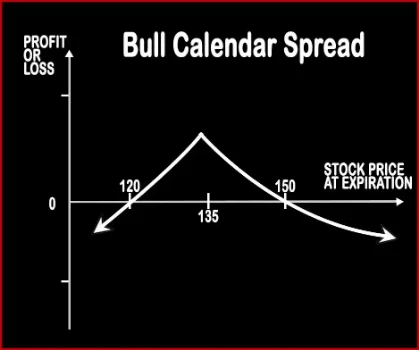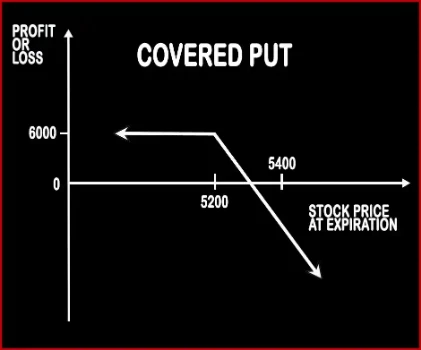Compare Strategies
| BULL CALENDER SPREAD | COVERED PUT | |
|---|---|---|

|

|
|
| About Strategy |
Bull Calendar Spread Option StrategyThis strategy is implemented when a trader is bullish on the underlying stock/index in the short term say 2 months or so. A trader will write one Near Month OTM Call Option and buy one next Month OTM Call Option, thereby reducing the cost of purchase, with the same strike price of the same underlying asset. This strategy is used when a trader wants to make prof |
Covered Put Option StrategyThis strategy is exactly opposite to Covered Call Strategy. Here the investor is neutral or moderately bearish in nature and wants to take advantage of the price fall in the near future. The trader will short one lot of stock future. Now the trader will short ATM Put Option, the option strike price will be his exit price. If the prices rally above the strike price, the .. |
BULL CALENDER SPREAD Vs COVERED PUT - Details
| BULL CALENDER SPREAD | COVERED PUT | |
|---|---|---|
| Market View | Bullish | Bearish |
| Type (CE/PE) | CE (Call Option) + PE (Put Option) | PE (Put Option) + Underlying |
| Number Of Positions | 2 | 2 |
| Strategy Level | Beginners | Advance |
| Reward Profile | Unlimited | Limited |
| Risk Profile | Limited | Unlimited |
| Breakeven Point | Stock Price when long call value is equal to net debit. | Futures Price + Premium Received |
BULL CALENDER SPREAD Vs COVERED PUT - When & How to use ?
| BULL CALENDER SPREAD | COVERED PUT | |
|---|---|---|
| Market View | Bullish | Bearish |
| When to use? | This strategy is used when a trader wants to make profit from a steady increase in the stock price over a short period of time. | The Covered Put works well when the market is moderately Bearish. |
| Action | Sell 1 Near-Term OTM Call, Buy 1 Long-Term OTM Call | Sell Underlying Sell OTM Put Option |
| Breakeven Point | Stock Price when long call value is equal to net debit. | Futures Price + Premium Received |
BULL CALENDER SPREAD Vs COVERED PUT - Risk & Reward
| BULL CALENDER SPREAD | COVERED PUT | |
|---|---|---|
| Maximum Profit Scenario | You have unlimited profit potential to the upside. | The profit happens when the price of the underlying moves above strike price of Short Put. |
| Maximum Loss Scenario | Max Loss = Premium Paid + Commissions Paid | Price of Underlying - Sale Price of Underlying - Premium Received |
| Risk | Limited | Unlimited |
| Reward | Unlimited | Limited |
BULL CALENDER SPREAD Vs COVERED PUT - Strategy Pros & Cons
| BULL CALENDER SPREAD | COVERED PUT | |
|---|---|---|
| Similar Strategies | The Collar, Bull Put Spread | Bear Put Spread, Bear Call Spread |
| Disadvantage | • Limited profit even if underlying asset rallies. • If the short call options are assigned when the underlying asset rallies then losses can be sustained. | • Limited profit, unlimited risk. • Trader should have enough experience before using this strategy. |
| Advantages | • Limited losses to the net debit. • Enable trader to book profit even if underlying asset stays stagnant. • If the market trends reverse, cashing in from stock price movement at limited risk. | • Investors can book profit when underlying stock price drop, move sideways or rises by a small amount. • Able to generate monthly income. • Able to generate profit from fall in prices or mild increase in the prices. |